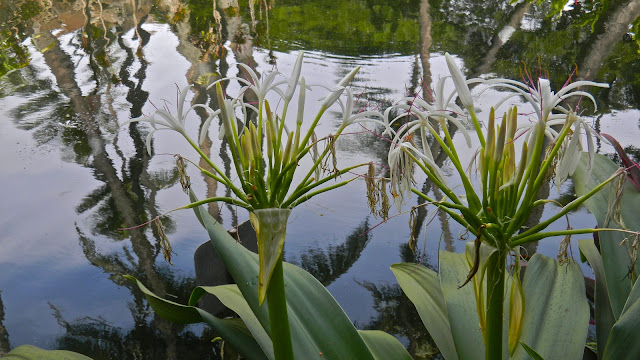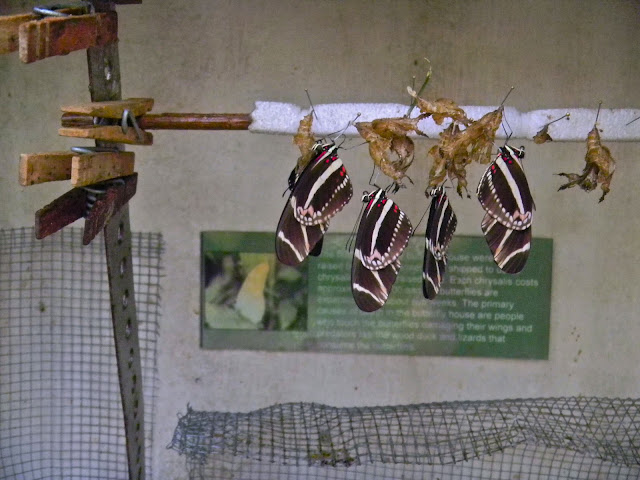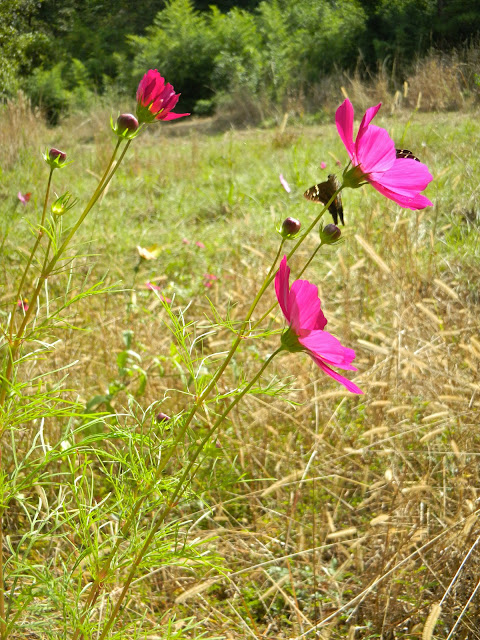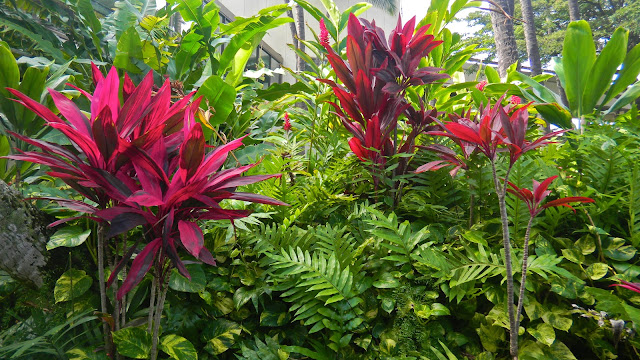 |
| A glimpse of paradise in one of Honolulu International Airport's gardens |
I first discovered the airport's Hawaiian, Japanese, and Chinese gardens two and a half years ago during a long layover while awaiting a connecting flight. The gardens are located in an easy-to-overlook courtyard, a tranquil oasis hidden in plain sight.
Earlier in the week my family and I had visited Ho'omaluhia, one of five botanical gardens belonging to the Department of Parks and Recreation of Honolulu. Ho'omaluhia is located up near the clouds in Kane'ohe. We saw tropical trees - some native species, some introduced. The hala tree is indigenous to Hawaii. Its fruit looks much like that of the pineapple plant, which, although grown commercially on Oahu, is not a native.
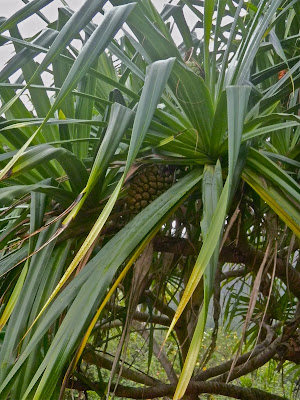 |
| Hala tree at Ho'omaluhia Botanical Garden |
 |
| The Earpod Tree, a member of the pea family, shown here at Ho'omaluhia Botanical Garden, is native to Central and South America |
Just driving or walking down the street in Kailua, where we stayed, I saw both familiar and unfamiliar plants, as well as unfamiliar varieties of familiar plants. Who knew that bougainvillea comes in such a variety of colors? When I see them in South Carolina, I only ever see the solid pink ones.
 |
| Bougainvillea, native to South America, thrive on Oahu |
Plumeria flowers are used in the making of leis. After bands of wind and rain pushed through, I observed plumeria blossoms more frequently on the ground than in trees.
 |
| Plumeria growing alongside a busy road in Kailua |
While at Waimea Valley I made photograph after photograph until my camera's battery exhausted. Unfortunately I cannot post any of those photos until I receive permission from the owners and thus far, perhaps due to the holidays, they have not responded to my request.
Of the garden's numerous collections of tropical plants, the extensive hibiscus collections were among my favorites. I would have loved to see the cannas in bloom, but none were flowering during my visit.
 |
| At Ho'omaluhia Botanical Garden |
Back at home now, I'm trying to harvest all the Meyer lemons before they freeze outside. With a tiny portion of my harvest, I'm attempting to make marmalade for the first time. Before my trip I froze enough juice to make lemonade every day next summer. Based on the number of lemons I have left, it appears I will be freezing more juice - much more.
Blooming at my place in the South Carolina Lowcountry on Christmas day: camellia Japonica (several varieties), narcissus, begonia, gaillardia, hellebore (budding), jungle geraniums (one plant sheltered under the carport and the other on the unheated sunporch), geraniums (both on the sunporch and outside), the lavender-colored lantana, alyssum (both the white and the purple ones), marigolds, a descendent of my grandmother's red antique rose, quince...what else? That's all I can think of now.
Wishing each of my readers a wonderful 2013! Thank you for taking the time to visit with me.
Wishing each of my readers a wonderful 2013! Thank you for taking the time to visit with me.
